December 1, 2014, 9:54 am | by Ray Nardo
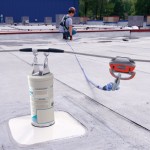 In our previous blog article, we talked about fall protection equipment for rooftop activities. We discussed how to install and use portable guardrails around unprotected edges and hatches, and how to use skylight railings and screens to protect workers from falling through skylights. Read more.
In our previous blog article, we talked about fall protection equipment for rooftop activities. We discussed how to install and use portable guardrails around unprotected edges and hatches, and how to use skylight railings and screens to protect workers from falling through skylights. Read more.
November 14, 2014, 10:56 am | by Ray Nardo
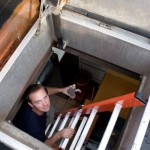 In our last blog post, we talked about how to identify fall hazards on a rooftop. Today, we will look at the fall protection equipment that is available to handle some of these hazards. Not every hazard can be avoided using safety equipment. But there are several types of fall protection systems that you can use to provide a solution to hazards such as: Read more.
In our last blog post, we talked about how to identify fall hazards on a rooftop. Today, we will look at the fall protection equipment that is available to handle some of these hazards. Not every hazard can be avoided using safety equipment. But there are several types of fall protection systems that you can use to provide a solution to hazards such as: Read more.
October 13, 2014, 9:36 am | by Ray Nardo
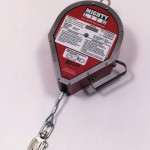 Inspections are essential in making sure your fall protection systems perform correctly. To ensure that your personal protective equipment is in good working order, and will protect you from injury in the event of a fall, your self-retracting lifelines (SRLs) should be inspected daily before each use. Remember, if you are the one using the PPE, it is your life on the line, and that means you are the one responsible for checking it every day before trusting it with your life. Read more.
Inspections are essential in making sure your fall protection systems perform correctly. To ensure that your personal protective equipment is in good working order, and will protect you from injury in the event of a fall, your self-retracting lifelines (SRLs) should be inspected daily before each use. Remember, if you are the one using the PPE, it is your life on the line, and that means you are the one responsible for checking it every day before trusting it with your life. Read more.
September 23, 2014, 11:38 am | by Ray Nardo
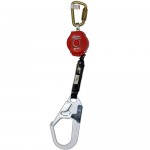 In a recent blog post we talked about the limitations of the six-foot shock-absorbing lanyard. The chief weakness of this type of solution is that lanyards require a very high fall clearance.
In a recent blog post we talked about the limitations of the six-foot shock-absorbing lanyard. The chief weakness of this type of solution is that lanyards require a very high fall clearance.
A user wearing a 6-foot lanyard must travel the full length of it before it begins to arrest their descent, plus 3-1/2 feet of deceleration, for a minimum total fall distance of 9 1/2 feet (the total distance depends on the relationship between the anchor point and the user’s D Ring). Add 6 feet for the user’s height, plus 3 feet of space underneath the user per OSHA regulations, and you need a clearance of 18 feet from the anchor point (6 + 3-1/2 + 6 + 3 = 18 feet). Read more.
September 12, 2014, 12:28 pm | by Ray Nardo
 You might think that all Self-Retracting Lifelines (SRLs) connectors are pretty much the same. As long as they do the job of protecting your workers in the event of a fall, you might believe that one SRL performs just as well as another.
You might think that all Self-Retracting Lifelines (SRLs) connectors are pretty much the same. As long as they do the job of protecting your workers in the event of a fall, you might believe that one SRL performs just as well as another.
In fact, there are several different types of SRLs. It’s a good idea to understand the differences between the models. Depending on your environment, certain types of may last longer than others, and do a better job of protecting your personnel from fall hazards and other dangers. Read more.
August 28, 2014, 10:51 am | by Ray Nardo
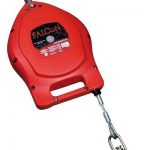 When discussing the effectiveness of certain types of fall protection equipment, there is a debate going on these days over which type of connector is best: self-retracting lifelines (SRLs) or 6-foot shock absorbing lanyards (the connector is the device that links the body harness to an anchorage, such as an overhead fixed track or single-point anchor points). It is our opinion that SRLs are the best type of connector. Yes, lanyards are less expensive, but SRLs provide more effective fall protection, and are worth the extra money you spend. Read more.
When discussing the effectiveness of certain types of fall protection equipment, there is a debate going on these days over which type of connector is best: self-retracting lifelines (SRLs) or 6-foot shock absorbing lanyards (the connector is the device that links the body harness to an anchorage, such as an overhead fixed track or single-point anchor points). It is our opinion that SRLs are the best type of connector. Yes, lanyards are less expensive, but SRLs provide more effective fall protection, and are worth the extra money you spend. Read more.
June 17, 2014, 11:12 am | by Ray Nardo
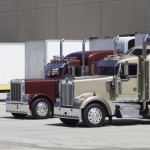 Whether you’re talking about tankers, flatbeds, or open or enclosed trailers, the business of loading and unloading, or servicing large vehicles can present a fall hazard. Working on loading docks, on scaffolding above or beside the trucks, or on the roof or sides of the trucks themselves, workers put themselves at risk in multiple situations where they are in danger of falling. Read more.
Whether you’re talking about tankers, flatbeds, or open or enclosed trailers, the business of loading and unloading, or servicing large vehicles can present a fall hazard. Working on loading docks, on scaffolding above or beside the trucks, or on the roof or sides of the trucks themselves, workers put themselves at risk in multiple situations where they are in danger of falling. Read more.
April 18, 2014, 1:44 pm | by Ray Nardo
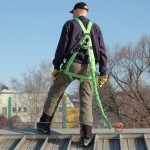 Fall arrest systems are designed as a safety backup mechanism when a worker must be exposed to a fall hazard in order to accomplish assigned tasks. When the worker needs to be able to move along either a horizontal or vertical plane, lifelines are used to protect the worker. The lifelines can be constructed using either cable or fixed-track. Read more.
Fall arrest systems are designed as a safety backup mechanism when a worker must be exposed to a fall hazard in order to accomplish assigned tasks. When the worker needs to be able to move along either a horizontal or vertical plane, lifelines are used to protect the worker. The lifelines can be constructed using either cable or fixed-track. Read more.
March 28, 2014, 2:49 pm | by Ray Nardo
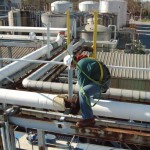 Conducting annual lifeline inspections goes hand in hand with proper training of your workers. Your equipment isn’t protecting anyone when it has missing, worn or defective components. Worse, it can create an unwarranted illusion of security. Installing fall protection equipment in your workplace is a great first step towards keeping your employees working at heights safe from fall hazards. Read more.
Conducting annual lifeline inspections goes hand in hand with proper training of your workers. Your equipment isn’t protecting anyone when it has missing, worn or defective components. Worse, it can create an unwarranted illusion of security. Installing fall protection equipment in your workplace is a great first step towards keeping your employees working at heights safe from fall hazards. Read more.
March 14, 2014, 3:59 pm | by Ray Nardo
 While a comprehensive or strategic fall prevention or protection plan is certainly admirable, advantageous and the right long-term solution, it’s not always practical to implement all at once. The implementation of a complete solution is often a costly and time-consuming undertaking.
While a comprehensive or strategic fall prevention or protection plan is certainly admirable, advantageous and the right long-term solution, it’s not always practical to implement all at once. The implementation of a complete solution is often a costly and time-consuming undertaking.
Do you have to implement a comprehensive solution all at once, or piecemeal the installation? Read more.
 In our previous blog article, we talked about fall protection equipment for rooftop activities. We discussed how to install and use portable guardrails around unprotected edges and hatches, and how to use skylight railings and screens to protect workers from falling through skylights. Read more.
In our previous blog article, we talked about fall protection equipment for rooftop activities. We discussed how to install and use portable guardrails around unprotected edges and hatches, and how to use skylight railings and screens to protect workers from falling through skylights. Read more.









